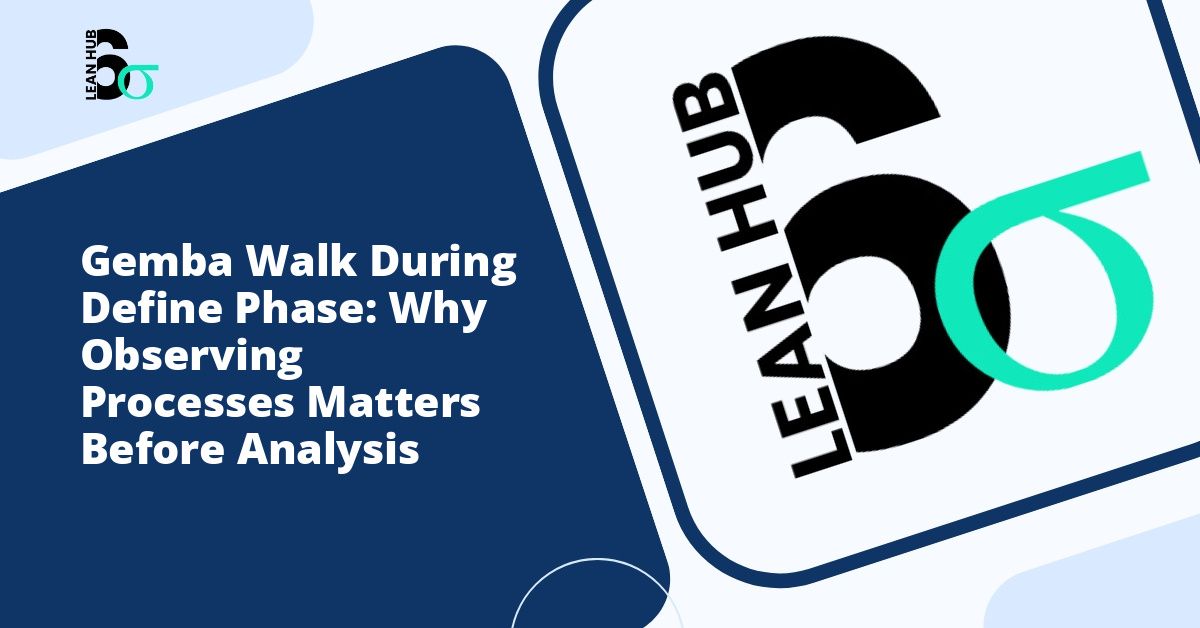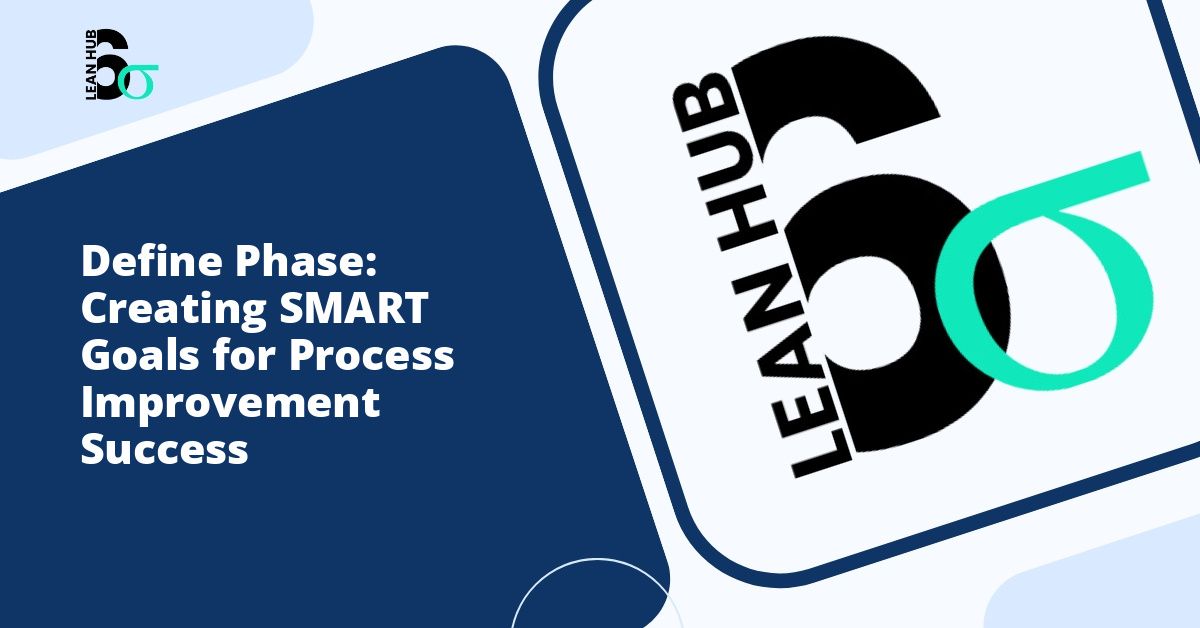In the world of process improvement, there is a fundamental truth that often gets overlooked: you cannot improve what you do not truly understand. This principle lies at the heart of the Gemba walk, a powerful practice that has become an essential component of Lean Six Sigma methodologies. When conducted during the Define phase of a project, a Gemba walk provides invaluable insights that no amount of data analysis or conference room discussions can replicate.
The term “Gemba” originates from Japanese and translates to “the real place” or “the place where value is created.” In business contexts, this refers to the actual location where work happens, whether that is a manufacturing floor, a hospital ward, a customer service center, or any other operational environment. A Gemba walk involves going to this real place to observe processes firsthand, engage with employees, and gain authentic understanding of how work truly flows. You might also enjoy reading about How to Facilitate a SIPOC Workshop: A Complete Step-by-Step Guide for Team Leaders.
Understanding the Define Phase in Lean Six Sigma
The Define phase represents the critical first step in the DMAIC (Define, Measure, Analyze, Improve, Control) methodology that forms the backbone of Lean Six Sigma projects. During this phase, project teams work to clearly articulate the problem, establish project goals, identify stakeholders, and create a project charter. Many organizations also refer to this as the recognize phase, where teams recognize and acknowledge that a problem or opportunity for improvement exists. You might also enjoy reading about How to Conduct Customer Interviews for Six Sigma VOC Analysis: A Complete Guide.
However, the Define phase often falls victim to a common pitfall: teams may rush to define problems based on assumptions, secondhand reports, or high-level data without truly understanding the ground reality. This is precisely where the Gemba walk becomes indispensable. By observing processes in their natural environment before diving into detailed analysis, teams can ensure they are addressing real problems rather than perceived ones. You might also enjoy reading about Problem Statement vs. Goal Statement: Writing Both for Maximum Project Clarity.
The Critical Role of Direct Observation
Direct observation through Gemba walks offers several distinct advantages that paper-based research or remote analysis simply cannot match. When you witness a process unfold in real time, you capture nuances that never make it into standard operating procedures or process documentation. You see the workarounds that employees have developed, the bottlenecks that create frustration, and the inefficiencies that have become so normalized that nobody thinks to mention them anymore.
Consider a manufacturing scenario where production reports indicate that a particular assembly line consistently falls short of its daily targets. Conference room discussions might lead to hypotheses about equipment malfunction, inadequate staffing, or raw material quality issues. However, a Gemba walk might reveal something entirely different: perhaps the physical layout requires workers to take unnecessary steps between workstations, or maybe unclear instructions lead to frequent rework that does not get properly documented.
Building Credibility and Trust
Beyond the technical benefits, conducting Gemba walks during the Define phase sends a powerful message to frontline employees. It demonstrates that leadership and improvement teams value their input and respect their expertise. Workers who perform tasks day in and day out often possess deep knowledge about what works, what does not, and what could be improved. By showing up at the Gemba with genuine curiosity and humility, project leaders build trust and open channels of communication that will prove invaluable throughout the entire improvement initiative.
How to Conduct an Effective Gemba Walk
While the concept of observing work processes may seem straightforward, conducting a truly effective Gemba walk requires preparation, intentionality, and the right mindset. Here are the key elements that distinguish a valuable Gemba walk from a simple workplace tour.
Preparation and Planning
Before stepping onto the floor or into the operational area, take time to prepare. Review available documentation about the process you will observe, including process maps, standard work instructions, and recent performance metrics. Identify specific aspects you want to understand better, but remain open to unexpected discoveries. Inform employees and supervisors in advance that you will be visiting, explaining your purpose clearly to reduce anxiety and encourage openness.
Adopting the Right Mindset
The most critical element of a successful Gemba walk is approaching it with genuine curiosity rather than judgment. You are there to learn, not to audit or criticize. Leave preconceptions at the door and resist the urge to immediately jump to solutions. Your role is to observe, ask questions, and seek to understand. This requires patience and active listening skills.
Key Activities During the Walk
As you conduct your Gemba walk, focus on these essential activities:
- Observe the actual process flow: Watch how work moves from one step to the next. Look for waiting times, unnecessary movements, and points where work accumulates.
- Engage with employees: Ask open-ended questions about their work. What challenges do they face? What makes their jobs easier or harder? What ideas do they have for improvement?
- Take detailed notes: Document what you see, but also be present in the moment. Consider using photos or videos when appropriate and permitted.
- Follow the work, not the worker: Track how a product, document, or service request flows through the system rather than focusing solely on individual employees.
- Note discrepancies: Pay attention to differences between how work is supposed to happen according to official procedures and how it actually happens in practice.
Integrating Gemba Walk Insights into Problem Definition
The observations gathered during your Gemba walk should directly inform how you define the problem and scope your Lean Six Sigma project. Often, what teams initially thought was the problem turns out to be merely a symptom of deeper issues. The Gemba walk helps peel back these layers to identify root causes worth addressing.
When translating Gemba observations into your project definition, focus on distinguishing between opinions and facts. Document what you actually witnessed rather than what people told you happens. If you heard conflicting accounts from different employees, note these discrepancies as areas requiring further investigation during the Measure phase.
Creating a Robust Problem Statement
Armed with firsthand knowledge from the Gemba, your problem statement becomes more concrete and actionable. Instead of a vague statement like “Customer service response times are too slow,” you might develop something more specific: “Customer service representatives spend an average of 12 minutes per call searching for information across four different systems, leading to extended wait times and customer frustration.” This level of specificity, grounded in observation, sets the stage for targeted improvement efforts.
Common Mistakes to Avoid
Even well-intentioned Gemba walks can fall short if certain pitfalls are not avoided. One common mistake is conducting the walk with too large a group, which can intimidate frontline workers and prevent candid conversations. Another error is rushing through the observation without taking adequate time to truly understand what you are seeing.
Perhaps the most significant mistake is treating the Gemba walk as a one-time event during the recognize phase rather than an ongoing practice. While the initial walk during the Define phase is crucial, returning to the Gemba throughout your improvement project helps verify that changes are working as intended and that new problems have not emerged.
The Lasting Impact of Starting with Observation
When Lean Six Sigma projects begin with thorough Gemba walks during the Define phase, they benefit from a foundation built on reality rather than assumptions. This approach increases the likelihood that improvement efforts will address actual pain points, gain employee buy-in, and deliver meaningful results. The practice of going to the Gemba reinforces a culture of respect for people and processes, recognizing that those closest to the work often have the clearest view of opportunities for improvement.
In an era where remote work and digital tools sometimes create distance between leaders and operational realities, the Gemba walk serves as a vital counterbalance. It reminds us that behind every process metric and data point are real people doing real work, and that sustainable improvement requires understanding their world firsthand. By making observation a priority before analysis, organizations set themselves up for Lean Six Sigma initiatives that truly transform how work gets done.
The investment of time required for proper Gemba walks during the Define phase pays dividends throughout the entire improvement journey. Problems are defined more accurately, stakeholders are engaged more effectively, and solutions ultimately address real needs rather than perceived ones. In the discipline of process improvement, seeing truly is believing, and believing based on direct observation is what separates successful projects from those that merely shuffle papers and hold meetings.








